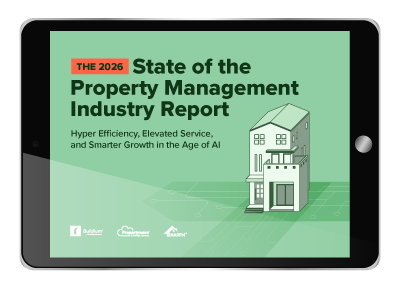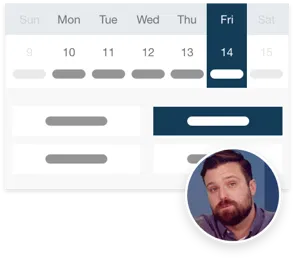Tracking rent payments is essential—but tracking when, how much, and for which units rent is due? That’s where the rent schedule comes in.
Whether you manage one property or a growing portfolio, a rent schedule helps you stay organized, forecast income, and support your day-to-day operations. For property managers and owners alike, it’s a key tool for both planning and performance tracking.
In this post, we’ll explain what a rent schedule is, what it includes, how it differs from a rent roll, and why it’s an essential part of every property manager’s toolkit.
What Is a Rent Schedule?
A rent schedule is a document or report that outlines the rent due for each unit in a property, along with payment dates, amounts, and lease terms. It’s typically created at the start of a lease and updated as lease terms change, units turn over, or rent increases are implemented.
Rent schedules can apply to:
- Residential rentals
- Commercial leases
- Multifamily buildings
- Entire portfolios
The schedule provides a unit-by-unit overview of current and future rent obligations, giving you a snapshot of expected income across time.
What’s Included in a Rent Schedule?
The structure of a rent schedule varies depending on the type of property and the complexity of the leases involved. That said, a typical rent schedule includes:
- Property and unit information (e.g., address, unit number)
- Tenant name
- Lease start and end dates
- Monthly rent amount
- Payment frequency (monthly, quarterly, etc.)
- Scheduled rent increases (if applicable)
- Next payment due date
- Total rent due over the lease term
For commercial or long-term leases, it may also include:
- Annual rent escalations
- Base rent vs. percentage rent
- CAM charges (common area maintenance fees)
- Break clauses or renewal options
Some rent schedules also project expected rental income month by month, helping with budgeting and forecasting.
Rent Schedule vs. Rent Roll: What’s the Difference?
Although they sound similar, a rent schedule and a rent roll serve different purposes.
| Rent Roll | Rent Schedule |
| Snapshot of active leases | Projection of rent over time |
| Shows current rent, tenant, unit status | Shows lease term, rent changes, and payment timing |
| Used for performance tracking | Used for income forecasting and planning |
| Focuses on now | Focuses on now and future |
In short, the rent roll shows what is, while the rent schedule shows what’s coming.
Why a Rent Schedule Matters in Property Management
A well-maintained rent schedule benefits both daily operations and long-term planning. Here’s how property managers use it to stay ahead:
Income Forecasting
A rent schedule lets you predict cash flow over the next several months—or even years. That’s especially useful when preparing budgets, planning distributions, or evaluating portfolio performance.
Rent Increases and Escalations
Need to track when scheduled rent increases kick in? A rent schedule shows the exact dates and amounts for each unit or tenant—so nothing slips through the cracks.
Owner Reporting
When an owner asks, “What’s our projected rental income for the year?”—a rent schedule gives you the answer in seconds.
Lease Management
Knowing when leases end or when rental rates change helps you stay ahead of renewals, market adjustments, and turnover planning.
Commercial Lease Oversight
In commercial properties with complex lease terms, the rent schedule becomes even more essential. It helps track multi-year rent escalations, negotiated free rent periods, and conditional rent adjustments.
Rent Schedule in Action: A Scenario
You’re managing a 12-unit apartment building. Some tenants are on one-year leases, others are on month-to-month. Two tenants recently renewed at higher rates, and one lease includes a $50 rent increase scheduled for month 7.
You build a rent schedule that includes:
- Tenant name and unit number
- Lease start and end dates
- Current rent amount
- Scheduled increase date and new rent
- Next payment due
From there, you can:
- Forecast income for the next 12 months
- Notify tenants ahead of rent increases
- Prepare the owner’s annual budget
- Plan your maintenance team’s workload around turnover dates
The rent schedule acts as both a reference and a planning tool—keeping everyone aligned.
How to Create and Maintain a Rent Schedule
You can build a rent schedule in a spreadsheet, but most modern property management platforms (like Buildium) generate rent schedules automatically based on your lease data.
To create a useful rent schedule:
- Start with your lease data: Pull lease start and end dates, rent amounts, and escalation clauses.
- Include all units: Even vacant ones, for forecasting purposes.
- Project rent by month: Create a rolling 12-month view if possible.
- Note planned changes: Flag upcoming rent increases or term changes.
- Keep it updated: Review it monthly and adjust for renewals, move-outs, and new leases.
For commercial properties or custom lease terms, consider adding a column for comments or notes to track unusual clauses.
Common Mistakes to Avoid
While rent schedules are simple in theory, there are a few pitfalls to watch for:
Forgetting to update escalations: Scheduled rent increases that aren’t implemented cost money and reduce portfolio performance.
Mixing in actuals: Don’t confuse the rent schedule with a payment ledger. This document is for projections, not tracking what was actually paid.
Ignoring concessions: If you offered a discount or free month, account for it in your schedule to avoid overestimating income.
Losing sight of lease terms: Don’t assume all leases renew automatically or escalate annually. Track terms individually to avoid missteps.
Frequently Asked Questions
Is a rent schedule required for every property?
Not legally, but it’s a best practice—especially for any property with multiple tenants or leases with future changes.
Can I generate a rent schedule with property management software?
Yes. Most platforms allow you to view, download, or export rent schedules as part of your lease management tools.
Does a rent schedule include security deposits?
No. Rent schedules focus on recurring rental income, not one-time charges or refundable fees.
Should I include vacant units?
Yes, especially if you’re forecasting income. Use estimated market rent and projected lease dates to complete the picture.
Can a rent schedule help with refinancing or selling a property?
Absolutely. Lenders and buyers often request rent schedules to assess income stability and future cash flow potential.
Read more on
